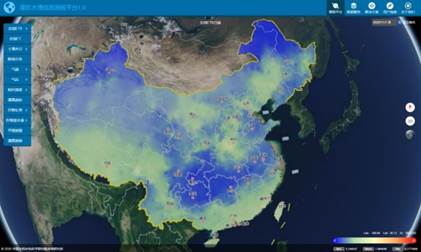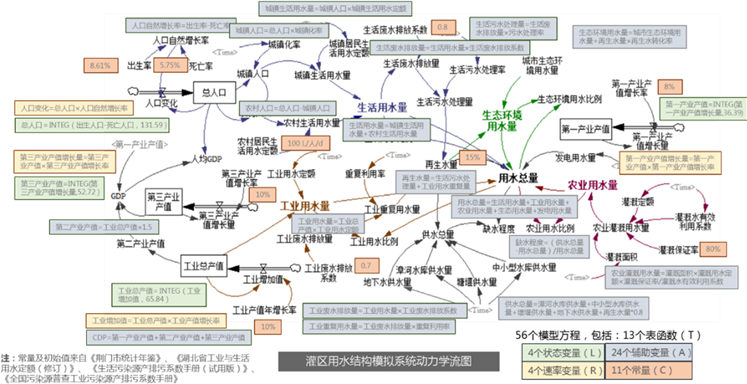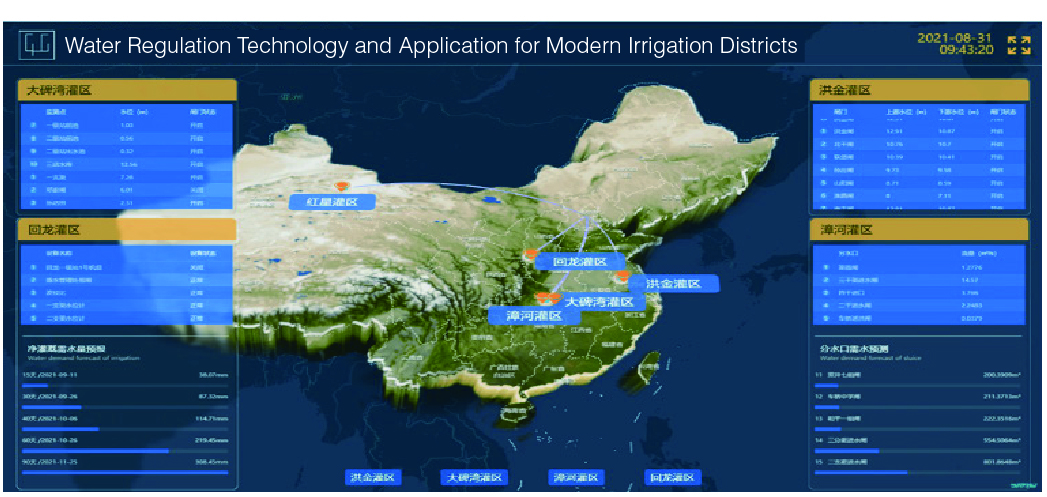Main Participants: ZHANG Baozhong, WEI Zheng, LI Yinong, TONG Ling, LI Yangbin, CHEN He, HAN Congying, ZHANG Shaoqiang, YUE Qiong, ZHAO Shaohui, WANG Yaqi, XIE Chongbao, LIU Liu, Hao Xinmei
Irrigation districts are the main user of agricultural water in China. Under zero growth constraint in the national total agricultural water consumption, efficient water use in irrigation districts is of great significance for ensuring national food and water security. Currently, the problem of diseased and hazardous projects has been generally solved, and the irrigation water use efficiency has considerably increased. However, as agriculture development in modern irrigation districts gradually ushers into a new stage characterized by moderate scale, complete mechanization, high intensification and rigid constraints on resources and the environment, the existing theories, technologies and equipment are not adequate to address the urgent needs of modern irrigation districts in terms of information perception and diagnosis, intelligent optimization of decision-making, and real-time feedback control, etc. This has exacerbated the contradiction between the temporal and spatial variability of water demand (consumption) and the uncertainty of water supply process in irrigation districts. Therefore, how to achieve an efficient, precise, and real-time control of the entire water use process in irrigation districts represents a major technical challenge today.
· Introducing the theory and methods for water allocation in canal (pipe) network of irrigation districts, including multi-process hydrodynamic simulation theory, prediction methods for estimating short, medium and long-term water demand, trade-off and allocation methods to balance multiple water users within the irrigation districts;
· Developing the data monitoring technology as well as measurement and control products for water supply and consumption in irrigation districts: including water supply and consumption forecasting and prediction, standardized information collection and transmission technology, hardware products for canal (pipe) measurement and control and an decision-making platform for intelligent water use;
· Establishing typical regulation and application patterns for irrigation districts: including four regulation patterns of technical integration such as water right restrictions in Southern gravity-fed irrigation districts, pipe network security in self-pressurized irrigation districts in North China, multi-water source improvement in water pumping irrigation districts in South China, and energy-saving dispatch of pumping station in irrigation districts in North China.
· A physical model with unified representation of hydrodynamics in irrigation district based on "Finite Volume Method + AI" has been established, along with a collaborative and improved decision-making method for multiple processes of water use in irrigation districts, and theories and methods for water regulation in irrigation districts;
· High-spatio and high-temporal monitoring and diagnosis technology for water demand and consumption as well as prediction technology for short, medium and long term water demand have been developed, achieving three-dimensional monitoring of the temporal and spatial distribution characteristics of water demand in irrigation districts;
· Water management information monitoring equipment covering flow meters with adjustable weir height, water level of new types of canal, and affordable farmland soil moisture, as well as field IoT general protocol access modules have been developed. A comprehensive water measurement network covering main canal systems and fields within the irrigation district has been established;
· An intelligent water use decision-making platform for irrigation districts has been established, which is capable of monitoring, early warning, and regulatory decision-making on water resources within the irrigation districts, providing robust technological support for the rational use of water;
· Based on the differences between irrigation districts with gravity flows (self-pressurized) and water lifting in South and North China, the system has integrated technologies such as water distribution optimization, pipeline network regulation, energy-saving scheduling of pumping station, intelligent irrigation decision-making for farmland, and terminal water use management.
The research findings have been successfully applied in several typical irrigation districts, including the technology integration demonstration zones in Jiangsu gravity-fed irrigation district, Xinjiang self-pressurized irrigation district, Hubei lifting irrigation district, and Shanxi lifting irrigation district. The effective utilization coefficient of irrigation water has been increased to above 0.60, and the water use efficiency has been improved to over 1.50 kg/m3. Part of the core technologies have been commercialized in 15 large and medium-sized irrigation districts including the Pishihang Digital Twin Irrigation District in Anhui Province, Santunhe Digital Twin Irrigation District in Xinjiang, and Weishan Digital Twin Irrigation District in Shandong Province, generating significant economic and social benefits. In the future, these technologies will be rolled out in more irrigation districts, transforming research findings into real productivity.

Figure 1 Water Demand Forecasting Platform for Irrigation Districts
Figure 2 Optimized Scheduling Model of Cascade Pumping Stations

Figure 3 The Dynamics Flow Chart of Water Use Structure Simulation System of Irrigation Districts

Figure 4 Water Regulation Technology and Application for Modern Irrigation Districts